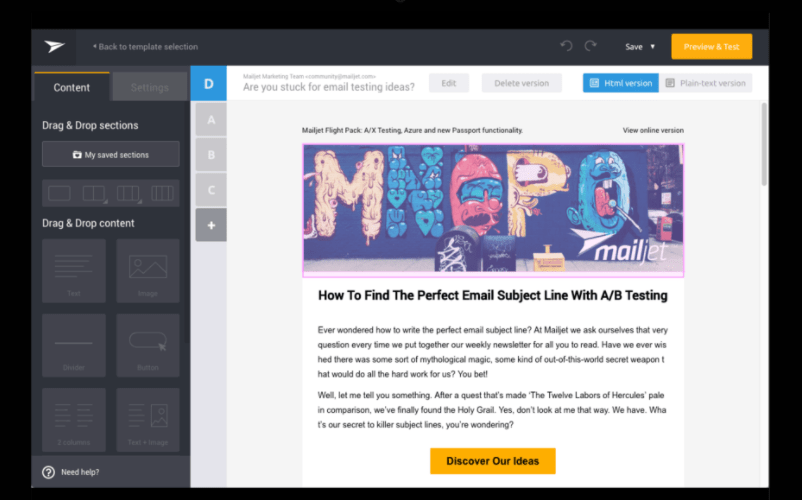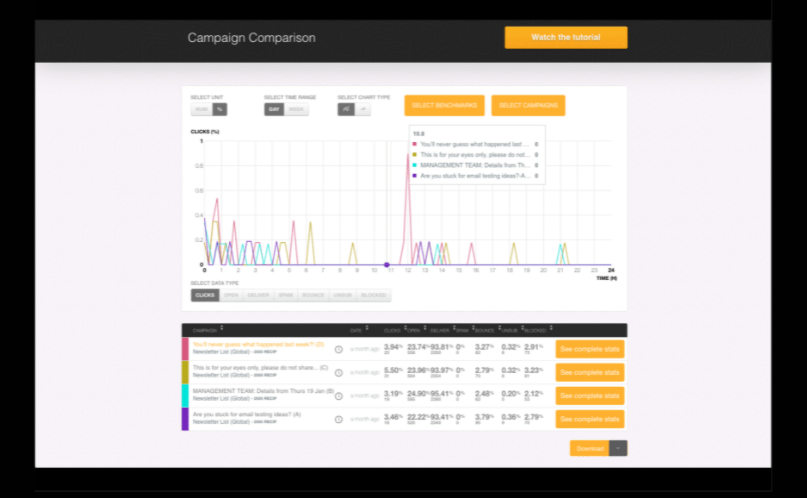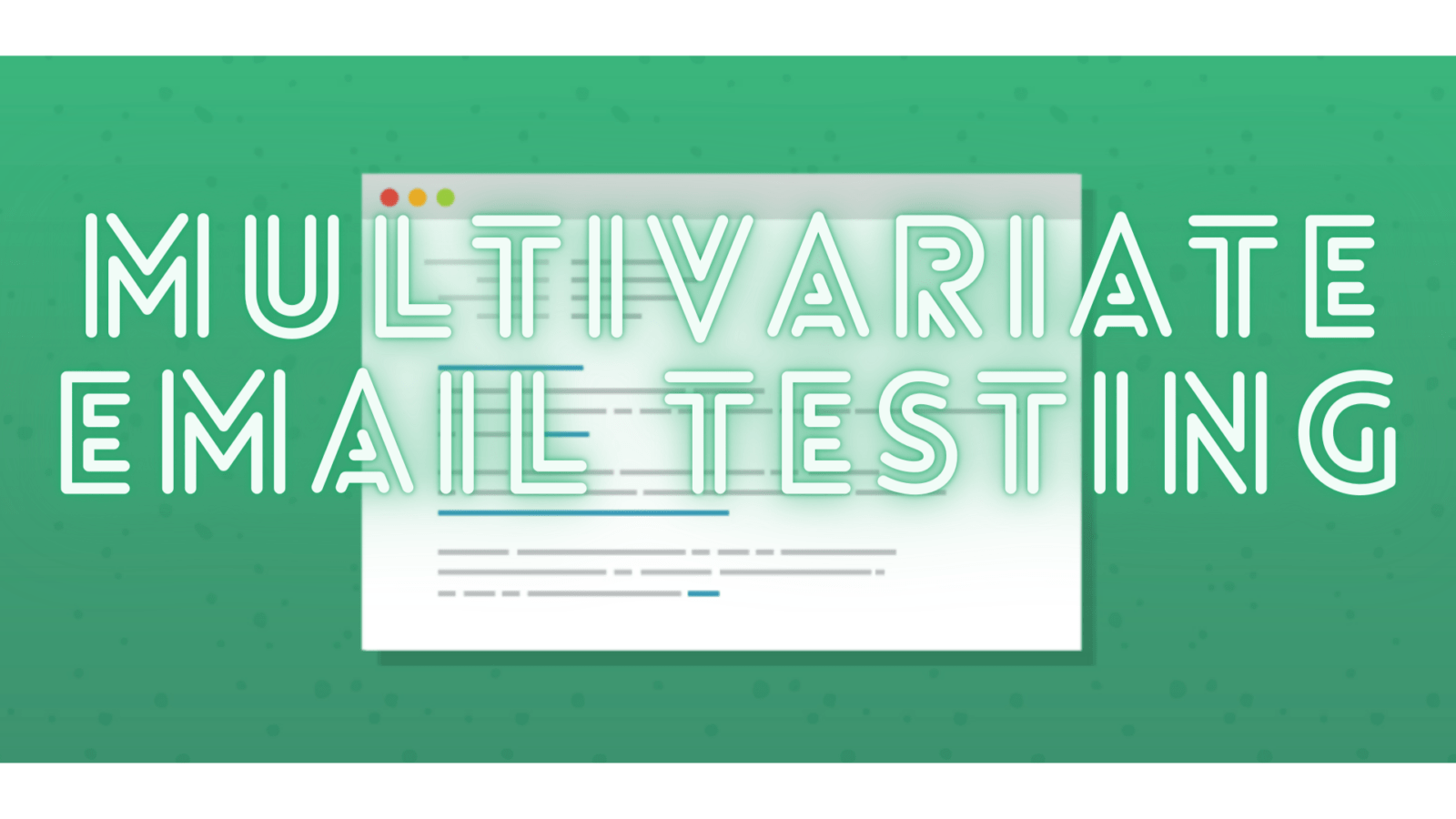It has happened to all of us. You walk into that fancy ice cream shop just around the corner, take a look at the different flavors and think ” If only I could taste them all… “. And then, as you’ve finally narrowed your choices down to those two (or three, or four…) that you really want, the guy at the store asks, ” Do you want to try some?” “Oh, the joy! Being able to make an informed decision about something as crucial as your choice of ice cream …
But what seems simple enough with one scoop turns into a new challenge when we add another. Yes, you might like Blue Moon and Coffee, but do you really think these two go well together? No, the answer is no. Don’t even try, it’s weird. So if you thought it was easy to get two scoops of ice cream, I’m here to tell you otherwise. This is not the case, mastering the perfect combination takes time … and a lot of testing.
Find the right combination with multivariate testing
So far you might be thinking we’ve become an ice cream blog (wouldn’t that be nice?), But don’t be fooled. Ice cream can be a metaphor for so many things in life… including email marketing.
A few weeks ago, we told you about the best email tools and how testing could help you get the most out of them. We have already told you everything about A/B (or A/X) tests: create two (or more) versions of an email, change a single variable (subject, name, CTA, etc.). That is, pick the best flavor for your email by trying out a few of your favorites (and some that you might not think will work).
Now we are stepping up our game. We opt for two scoops… and even a garnish. We’ll learn how to find the perfect combination to make our email campaigns even tastier.
So what is the multivariate test?
Glad you asked. Multivariate testing is basically testing multiple variations of the same email.
In short, when you A/B test an email, you duplicate your template and change only one element, be it the subject line, the banner, the text in the CTA … In multivariate testing, you change two ( or more) elements, to analyze the performance of different combinations thereof.
Uhmm… example, please?
Sure. Let’s say you have an awesome campaign to increase your sales and you want more people to click on your landing page, so you decide to give it a try:
- The CTA text: “ ”?
- The CTA position: Before the cover, or at the bottom of your email?
To perform a multivariate test, you’ll create and send four variations (2 texts x 2 positions) of the same email:
- CTA ” Buy Now “, before the fold.
- CTA ” Buy Now ” at the bottom.
- CTA “ Discover our incredible prices! », Before the fold.
- CTA “ Discover our incredible prices! “, basically.

While it sounds simple enough, the test gets a bit trickier when you add a third item, but it also means the results are even more powerful.
For example, take your great campaign and your great CTA dilemma. Yeah, you could test the position and the text but… and the color? Not adding color to the combination is like not adding toppings to your ice cream when someone offers them – totally unacceptable.
So now we have these three things to test:
- The CTA text: “ ”?
- The CTA position: Before the cover or at the bottom of your email?
- The color of the CTA: Red or black?
So we sit down, open Passport (or whatever, less cool email editor you use…), and create eight variations. Eight, you might ask? Well yes: 2 texts x 2 positions x 2 colors. No, it’s not six. Yes, it’s eight o’clock. Don’t worry, we won’t tell anyone about your rusty math skills.
Our eight variants will be:
- CTA ” Buy now “, before the fold, red.
- Buy Now CTA, before the fold, black.
- CTA ” Buy now “, at the bottom, in red.
- CTA “ Buy Now ”, bottom, black.
- CTA “ Discover our incredible prices! », Before the fold, red.
- CTA “ Discover our incredible prices! », Before the fold, black.
- CTA “ Discover our incredible prices! », Bottom, red.
- CTA “ Discover our incredible prices! », Below, black.
Get them ready, hit send, and wait. When it comes to analyzing the results, you’ll be able to see which of your CTA combinations encouraged more contacts to click. As easy as that.

OK, so I might like to… test it all out?
Now we know you’re about to get carried away and start planning a bunch of crazy options for your next email campaign. Hold on there! First of all, we need to establish some ground rules.
- Consider why you are testing: And no, checking the box is not a valid answer. Testing is only useful if you can identify the problem that you want to resolve. For example, ” I’m not getting as much traffic to my website as I expected and I want more people to click on my landing page .”
- Identify what to test: Now if your open rate is around 35% and you still see a very low click-through rate, the problem is possible not in the subject or name line, but in what your contacts see when they open their email. Is your column engaging? Are your CTAs easy to locate? Is your design attractive? Consider what can be factored into your results and come up with ideas to shake things up a bit.
- Always think about your metrics: Your email stats will give you the information you’re looking for after your test, but it’s important to understand which results from matter. If you experiment with different combinations of subject lines and names, the best performance indicator will be your open rate, while if you play with the color and text of your CTA, it will be the click-through rate you get. have to watch.
Brilliant! So, what do you do with GetResponse?
Fantastic question. Well, as you know, at Getresponse they don’t believe in testing just two variants of emails that’s why their A/B testing tool is not an A / B testing tool, but an A/X testing tool. This means that you can test up to 10 versions. Essentially, this means that you can either come up with 10 really witty subject lines to do a simple A/X test or create different variations that change a number of elements in your post.
But, they don’t stop there. You can also take advantage of campaign comparison to test different combinations over a period of time, such as the day and time it was sent. Does early morning on weekdays work better than noon on weekends? Or is lunchtime on Monday better?
To like? Can’t wait to get started? Play around with the Getresponse A/B testing tool and let us know how you found your winning combination on Twitter, using the hashtag #EmailMarketing.
Hey!!! If You liked this information then don’t forget to support us by sharing and leaving comments. Thank You
You might also like
12 best ways to grow your Email List in 2022
Open rate, click-through rate … are your emails average?
Bulk mailing: how not to become a spammer and keep in touch with the client





